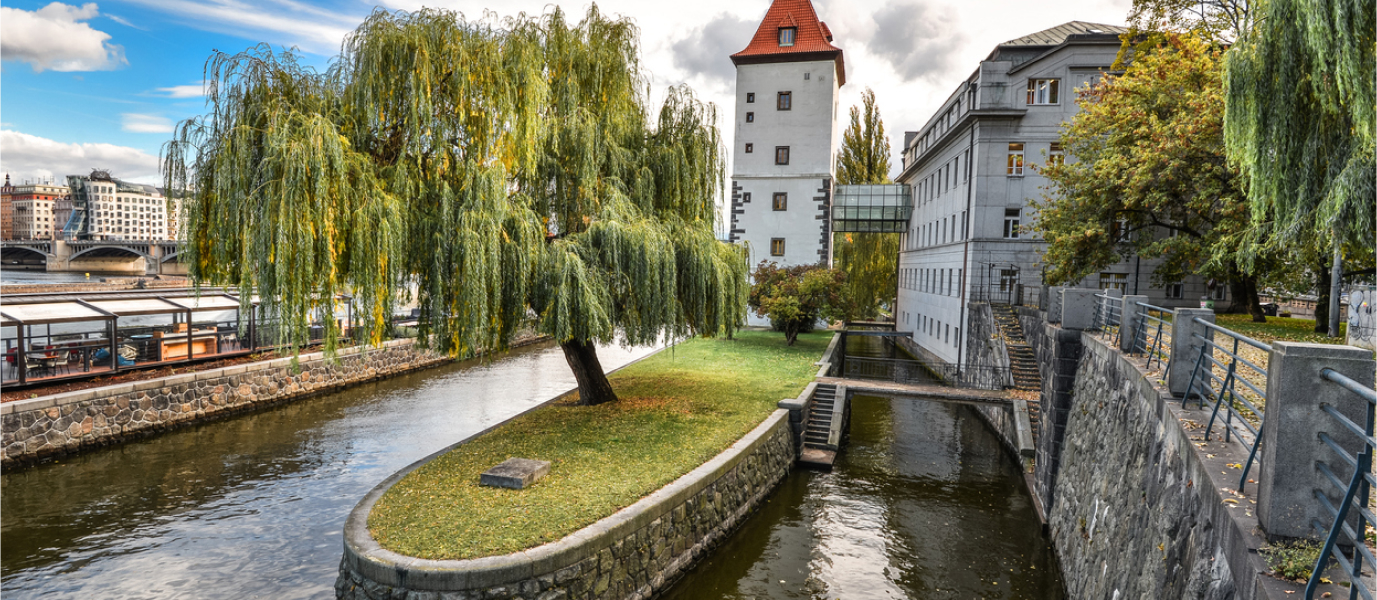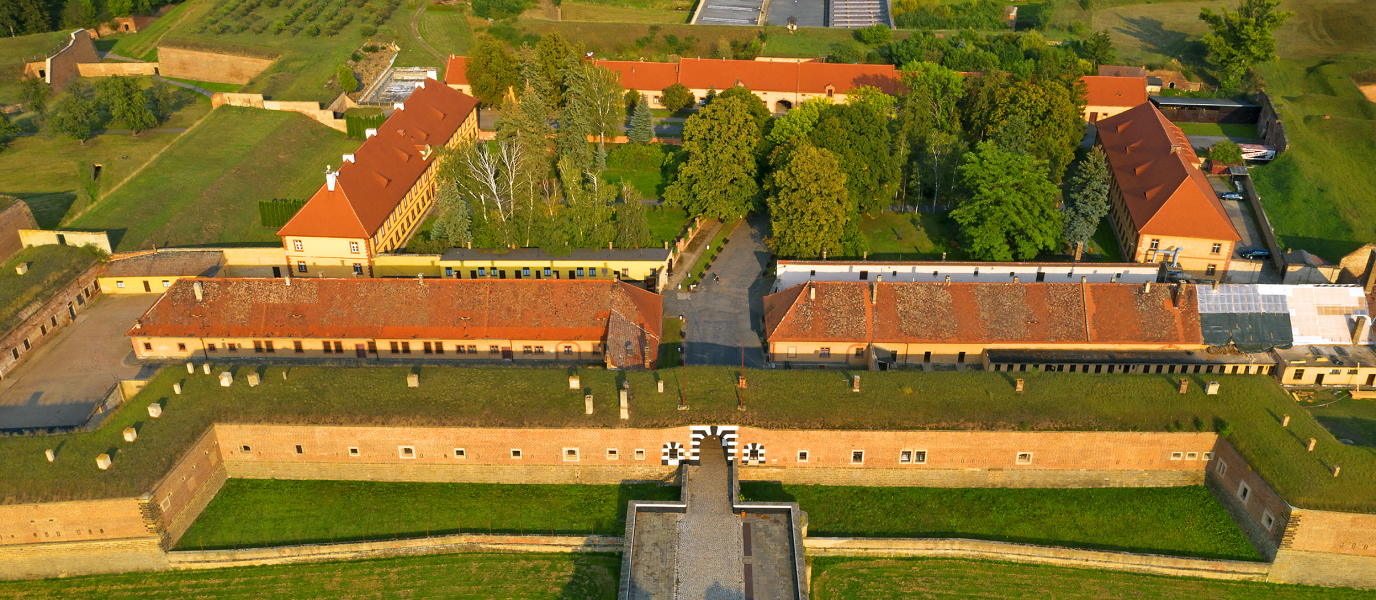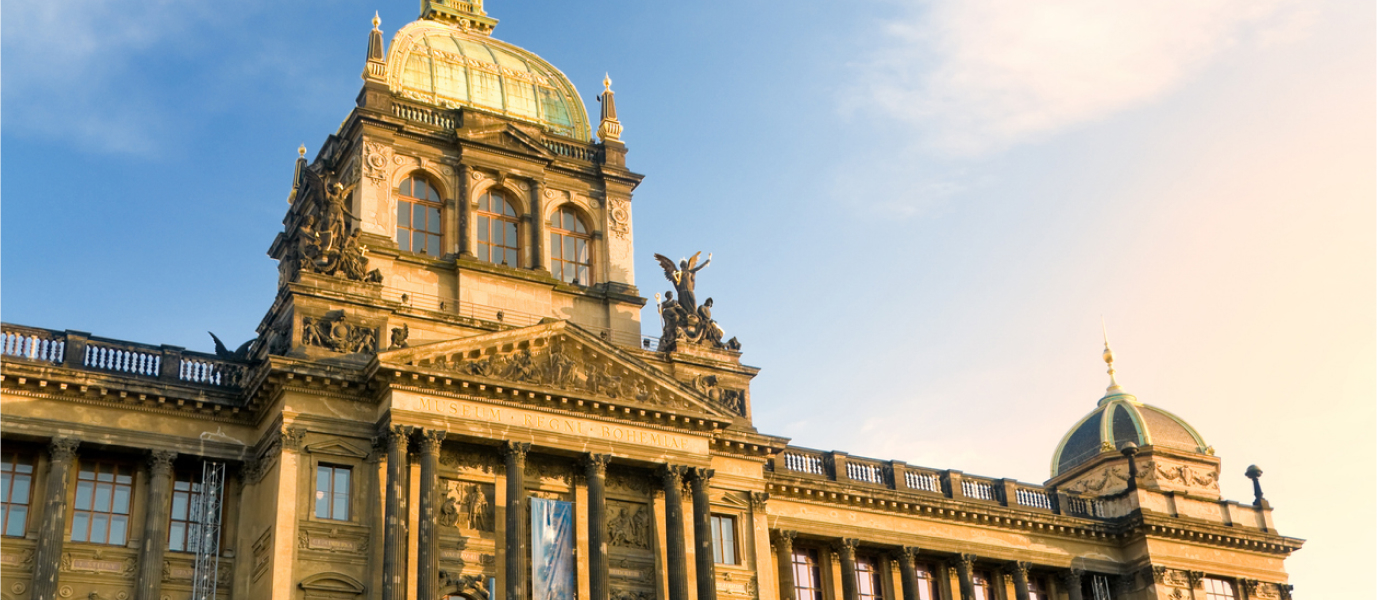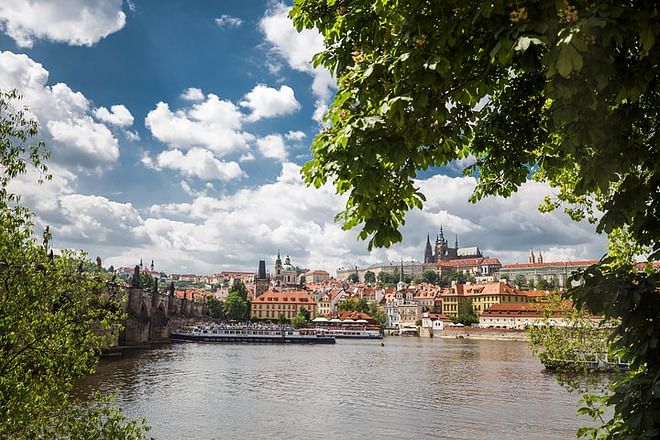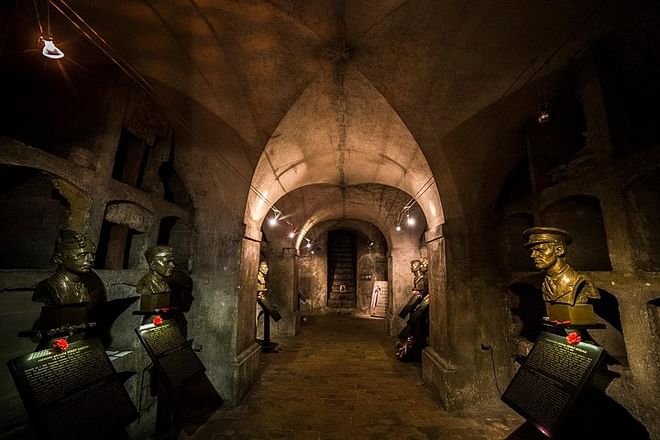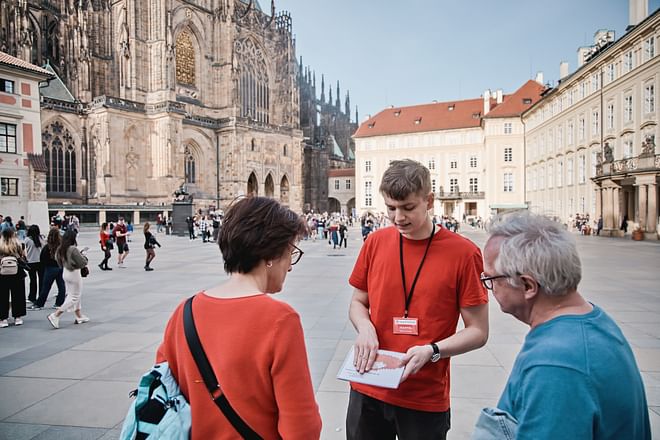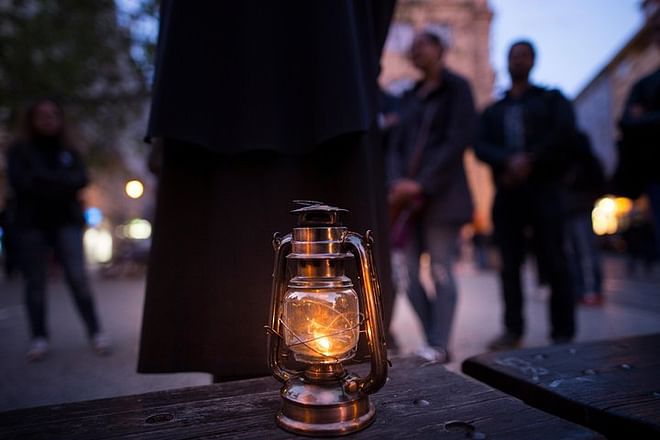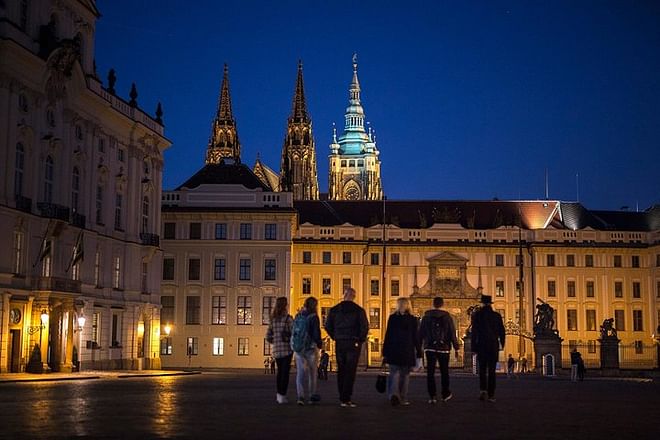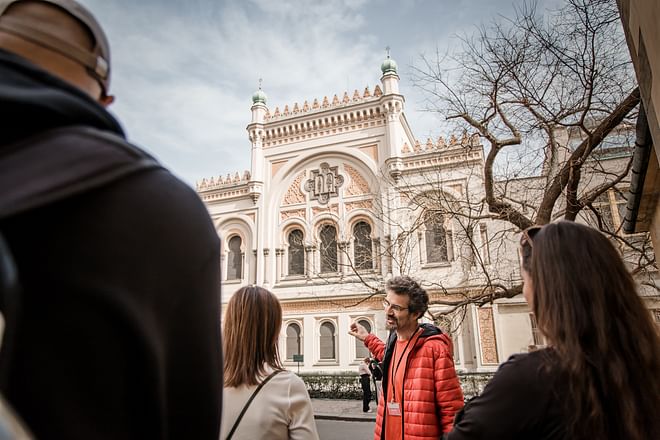Before entering the neighbourhood of Malá Strana, Prague’s famous Charles Bridge cuts across Kampa Island, a charming green oasis dotted with lovely elegant buildings. Separated from the west bank of Vltava river by the narrow Čertovka Canal—also known as Devil’s Canal—it is located between two bridges, the aforementioned Charles Bridge and Legií Bridge.
Once inhabited by Prague’s aristocracy, Kampa Island is home to what is for many the most romantic place in Prague. It also boasts a sculpture dedicated to harmony and nostalgic lone water mills that take you back in time to a fairy-tale scene. All this and much more awaits visitors on this unassuming isle when exploring its delightful parks and streets.
Kampa: what to do on this island in Prague
First of all, the best thing to do on Kampa Island is to amble around and enjoy everything that stirs the senses: for your sight, the lush greenery and multi-coloured foliage of its parks; for your sense of smell, the aroma of its flowers in spring; for your hearing, the murmur of the water as it gets carried through the old mills on Čertovka Canal… Kampa is considered one of the finest urban islands in Europe and has the advantage of being quiet and rarely visited by tourists, although it is a favourite among love birds.
At any rate, whether you get there from the north via the stairway that descends from Charles Bridge, or from the south via Legií Bridge, the experience is just as enjoyable. From the north, the first thing you will cross is the leafy Na Kampé Square, a charming place lined with understated houses and the air of a Central European village rather than an international capital. When the weather is good, the square fills with artisans selling their goods, and in winter, the melancholic stillness of Na Kampé makes it possibly one of the most romantic places in the world.
Leaving the square behind you will then come to a beautiful English garden often visited by families with kids and locals walking their dogs. If you time your stroll to come to an end on the southern side of the island at sunset, you’ll be able to enjoy unbeatable views of Prague’s Old Town.
Grand Priory Water Mill
One of the most enjoyable walking routes is via the path that runs parallel to Čertovka Canal, also known as Devil’s Canal. Until 1930 its water was traditionally used by washerwomen, and its current was also harnessed by means of mills. One of the most well-known is the Grand Priory Mill, an enormous restored waterwheel with a diameter of eight metres that gently turns. You can see other examples along Devil’s Canal, although they are in a state of disuse.
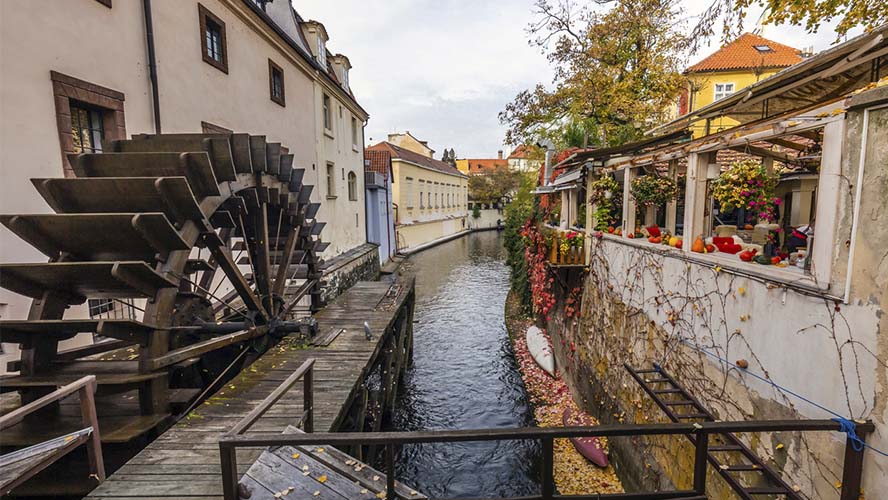
Kampa Museum
On the other side of the island, on the banks of Vltava river, is Kampa Museum, a private modern art institution whose facilities are, in their own right, cutting-edge. Arranged across different levels and connected by escalators, the museum boasts astonishing artworks and innovative decoration all installed in a series of well-lit spaces. What’s more, the complex is able to host open-air theatre productions.
The museum houses the collection of Jan and Meda Mládek, two collectors who became patrons of the cubist sculptor Otto Gutfreund and the painter František Kupka. In addition to the works of these two artists, the hall boasts pieces by the most renowned contemporary artists in Central Europe.
Outside the museum there are a series of fascinating sculptures including one that has become an icon for the island: the disproportional chair with a height of over seven metres situated on the riverbank on the site of a former mill. The chair belongs to one of the interior collections of the museum, from which it can be seen through a window that frames it as if it were a living painting. Opposite the chair, also outside, is a line of yellow penguin sculptures that remain impassive looking out towards Prague’s Old Town on the other side of the river.
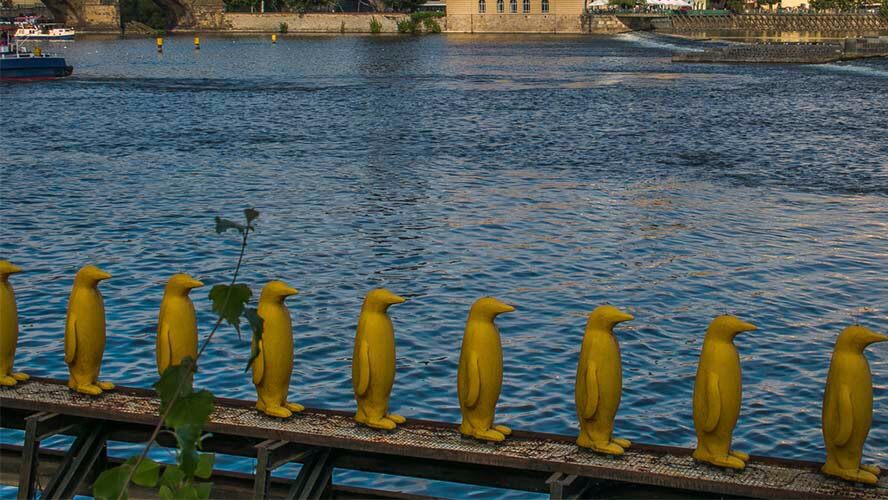
The Statue of Harmony
Not far from the museum, to the south, following the banks of Vltava river, is an unusual sculpture of what appears to be an Asian monk facing the other side of the river and praying. The sculpture was erected in honour of Sri Chinmoy, an Indian preacher, poet, writer and philosopher.
A pacifist and vegetarian, Chinmoy founded a meditation school in New York, which to this day has a large following. One of the most famous practices that he spearheaded was a series of ultramarathons that put the physical limits of the initiated to the test in order to achieve self-transcendence.
Padlock bridge
Ever since a book by the Italian writer Federico Moccia made attaching padlocks to Milvio Bridge in Rome popular, bridges all over the world have been adorned with locks as a metaphor for eternal love. A place as romantic as Kampa Island couldn’t be the exception and it boasts its very own padlock bridge. However, safety issues and the visual impact of this rusty declaration of love are such that we would prefer not to reveal its exact location.
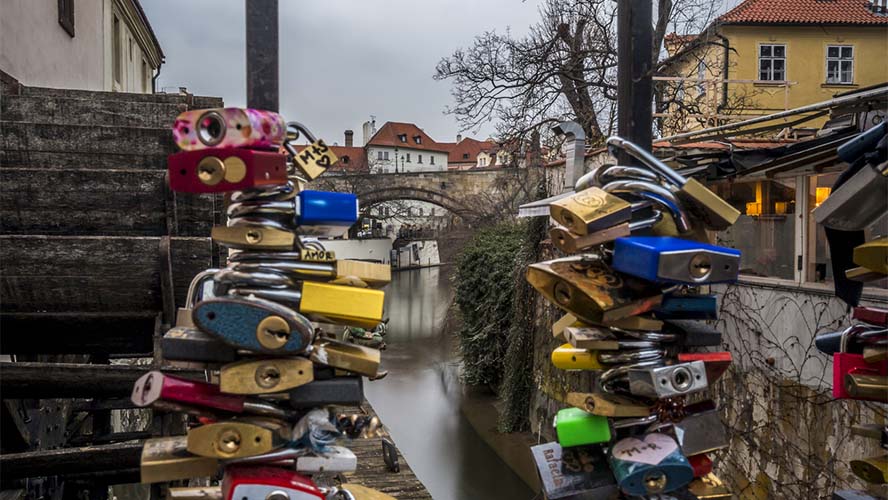
Vinárna Čertovka: the narrowest street in the world
What we do recommend, however, is visiting what is regarded as the narrowest street in the world. Although to do so you must leave the island. In effect, Vinárna Čertovka, as the street is known, is a 10-metre-long passage with a width of just 50 centimetres, which is why it’s impossible for two people to pass at the same time. As a result, pedestrian traffic lights were installed to indicate when you can walk through in one direction or the other. The street is so narrow that there have been occasions when larger people have gotten stuck between its walls unable to carry on or go back.
This strange alleyway is not on the island and instead lies to the north, very close to Charles Bridge and the Kafka Museum. It runs perpendicular to Lužického Street and leads to Čertovka restaurant on the banks of the eponymous canal.




































































